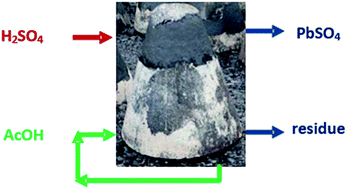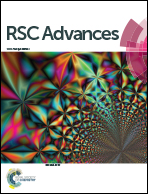Closed-loop solvometallurgical process for recovery of lead from iron-rich secondary lead smelter residues†
Abstract
A solvometallurgical process based on the use of concentrated acetic acid as lixiviant is proposed as an alternative for conventional hydrometallurgical processes to recover lead from iron-rich industrial residues generated by recycling of spent lead-acid batteries in a secondary lead smelter. Under the optimal conditions, a high selectivity for lead was obtained: more than 90% of the lead content could be dissolved, while only a small amount of iron (<6%) was codissolved. Lead was quantitatively recovered from the acetic acid leachate by addition of a stoichiometric amount of sulphuric acid. Acetic acid was recycled by distillation and reused in the leaching step, so that a closed-loop process was obtained. The process was optimised for iron-rich residue (matte), but also a proof-of-principle is given for lead recovery from another lead-containing residue (slag). The main advantages of this solvometallurgical process are the low power consumption (room-temperature process), the low consumption of chemicals (only sulphuric acid is consumed), full recycling of the acetic acid and the limitation of waste water formation.



 Please wait while we load your content...
Please wait while we load your content...